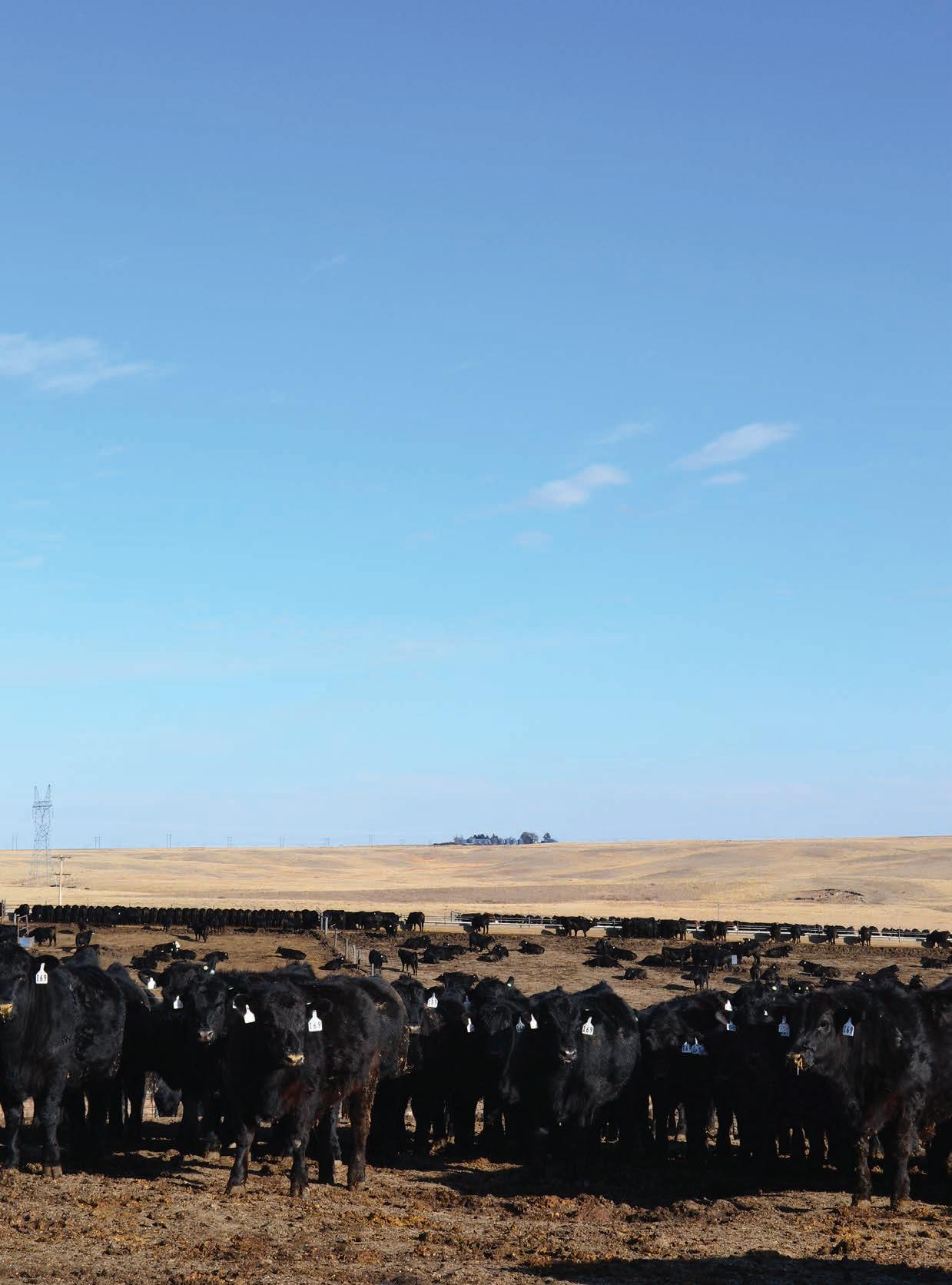Photo by Hannah Wine
by Lane Giess, ASA Geneticist
The $Gain economic subindex is now available on Herdbook.org.
ASA has officially released the $Gain economic subindex and Dry Matter Intake (DMI) as a part of the EPD suite on Herdbook.org. What is $Gain, and how can it be used responsibly?
The business of a seedstock producer is to provide genetic improvement for traits pertinent to economic success through all segments of the beef industry. An example of this are premiums for higher-quality carcasses. These premiums have led to drastic genetic selection for improved marbling in most breed populations. For this reason, seedstock producers play a pivotal role in shaping the genetic foundation of the beef industry. Traits that are associated with actual profitability are what we animal breeders call economically relevant traits (ERTs). Selection for ERTs ensures that commercial cattle producers have access to genetics that enhance profitability throughout the supply chain. Traditional selection for seedstock producers, however, has often over-emphasized growth traits such as weaning and yearling weight, and as such a more balanced approach is necessary to optimize biological and economic efficiency in our cow herds.
One of the more recent concerns in the business has been related to feed “efficiency” in feeder cattle. The reason for the quotes around “efficiency” is that in many cases, the tools we have developed to address feed conversion have been related to biological efficiency rather than economic efficiency, which can sometimes be antagonistic to meaningful improvement. A solution to this is the $Gain economic subindex developed by International Genetic Solutions to more appropriately address selection for improved feedlot performance by optimizing the economic efficiency during the finishing phase. Unlike traditional single-trait selection for dry matter intake (DMI) or residual feed intake (RFI), $Gain balances both the economic component of average daily gain (ADG) and DMI, ensuring that the most profitable animals are identified. The result of $Gain is already factored into both $API and $TI, meaning we already factor the relationship of value of gain to the cost of intake in both indexes.
The $Gain prediction is expressed as the difference in daily profitability of animals in the feedlot based on their combination of DMI and ADG expected progeny differences (EPD). ADG is positively weighted by the value of a pound of gain, and DMI is negatively weighted by the cost of a pound of dry matter. For example:
Bull A = $0.10 $Gain EPD
Bull B = $0.00 $Gain EPD
You would expect progeny from Bull A to be $0.10 more profitable per day than progeny from Bull B due to a combination of feed requirements and growth potential. $Gain is fundamentally a ratio-based prediction that accounts for both intake and gain. Animals that consume large amounts of feed but exhibit superior growth rates are recognized as desirable, as are those that consume less but still maintain appropriate growth. Conversely, animals that eat excessively without proportional growth, or those that eat minimally but fail to grow, are penalized within the prediction. This balance ensures that selection decisions are aligned with true economic efficiency, rather than simply reducing intake without considering performance outcomes. Many studies have found a positive genetic correlation between DMI and growth traits (weaning weight, yearling weight, etc.) exists. For instance, studies have shown that DMI is positively correlated with ADG, meaning that selection for reduced DMI alone can inadvertently lead to slower-growing, smaller-framed cattle. This trade-off underscores the importance of an economically driven approach like $Gain rather than a narrow focus on intake reduction.
Many breeders might argue that a tool that addresses this problem already exists in the Residual Feed Intake (RFI) EPD. Residual feed intake (RFI) has been widely used as a measure of feed efficiency, but it presents inherent challenges. RFI is calculated as the difference between an animal’s actual feed intake and its predicted intake based on maintenance and growth requirements. However, RFI merely quantifies variation rather than reflecting true feed efficiency. The issue lies in its failure to account for differences in growth and output, which are crucial in determining profitability. For example, two animals with the same RFI may differ significantly in total pounds gained, affecting their overall economic value in the feedlot.
Furthermore, biological efficiency — the concept underlying RFI — does not always align with economic efficiency. Different types of cattle can be profitable depending on the level of input received and their outputs. For example, cattle that consume more feed but achieve superior gains may be more valuable than those that consume less but grow at a suboptimal rate. While RFI may be related to profit in its attempt to identify more biologically efficient animals, it does not directly predict differences in profit. Because of this, there can be a large disparity between animals with the same RFI and actual profit. It is certainly possible for animals identified as being ideal for RFI to have a significantly poor ability to produce profit in the feedyard. A holistic approach that incorporates the economics of intake and growth is essential to optimizing profitability.
Producers should exercise caution when making genetic selections based solely on DMI reduction or RFI. While reducing feed intake may seem appealing, it can lead to unintended consequences such as smaller, slowergrowing cattle that do not maximize economic returns. The $Gain prediction offers a more comprehensive selection tool by incorporating both intake and gain into a single economic framework.
$Gain and DMI are now available in the suite of EPD on Herdbook.org. .



